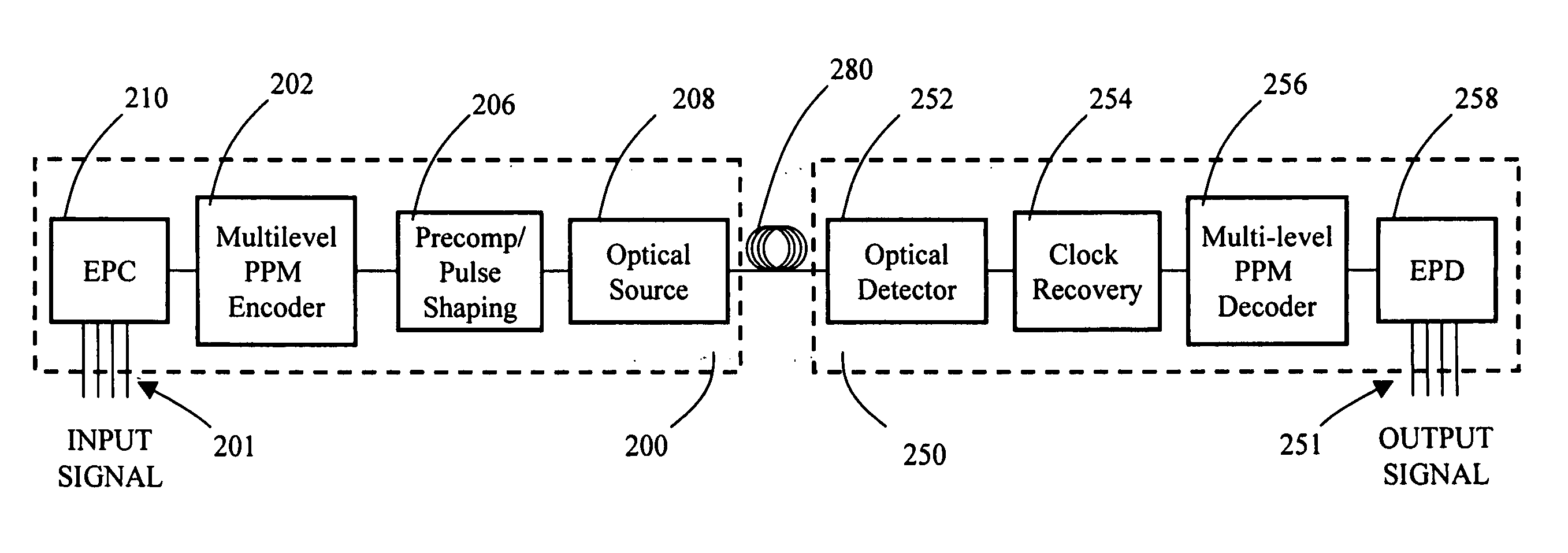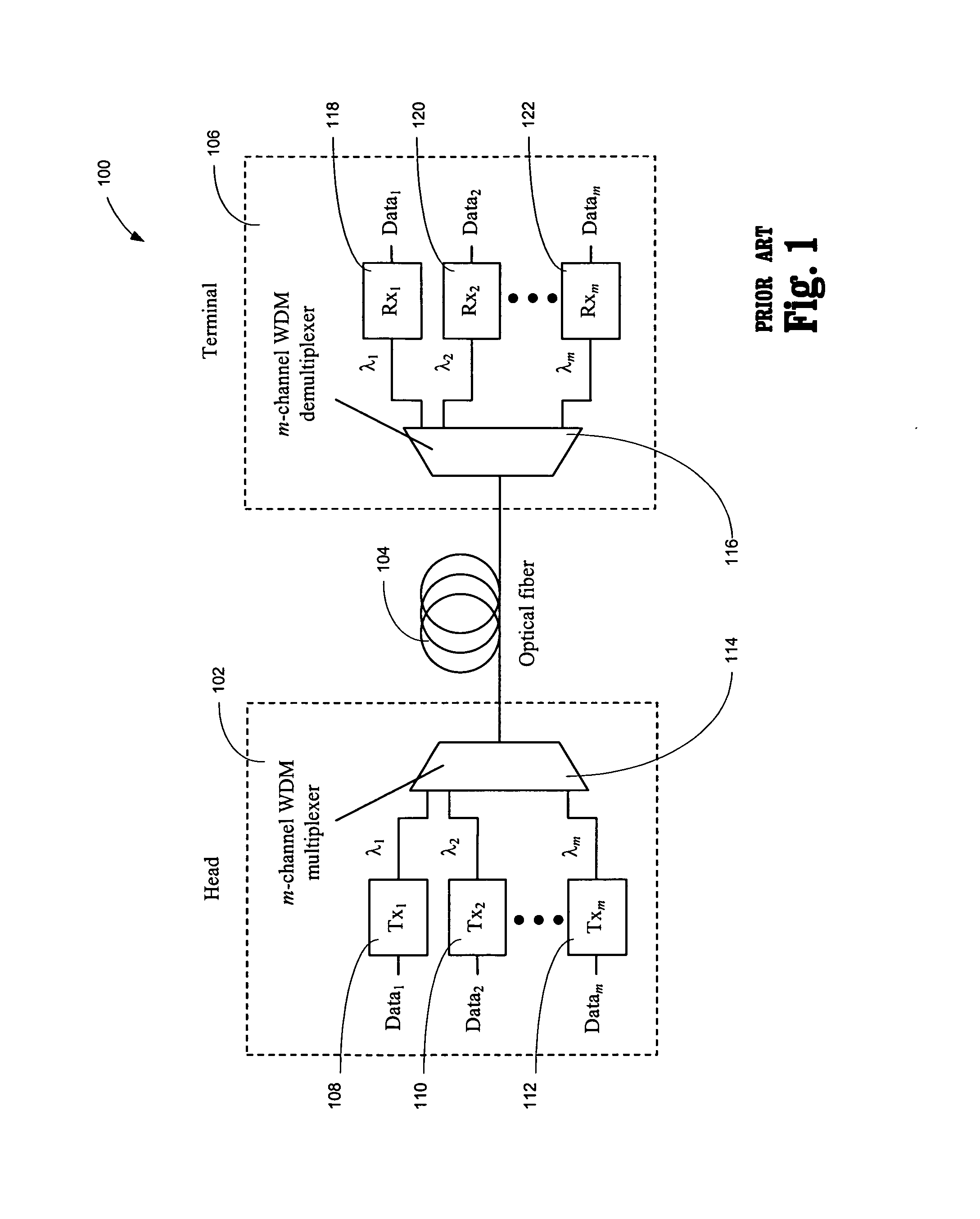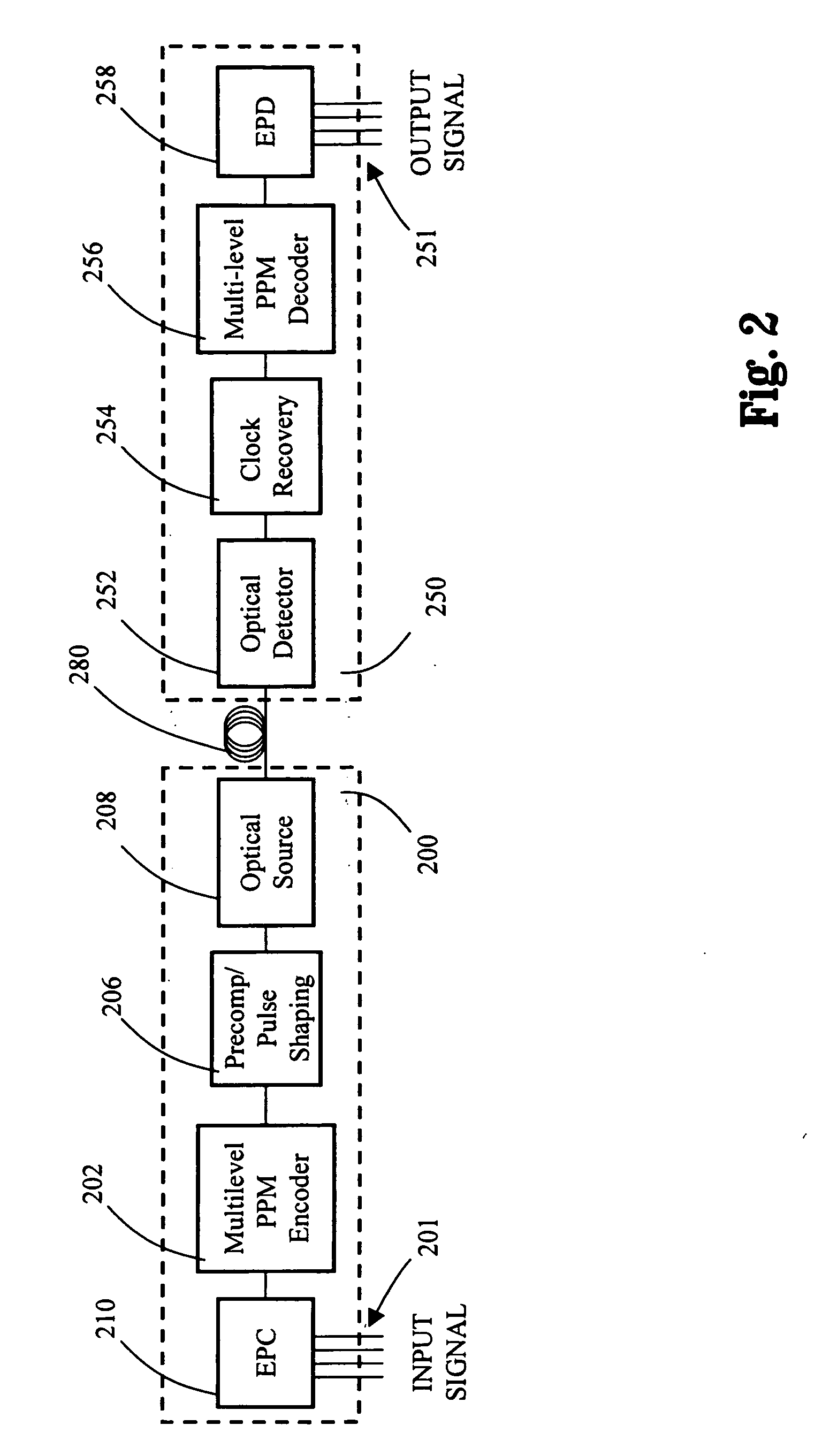Multilevel pulse position modulation for efficient fiber optic communication
a fiber optic communication and multi-level technology, applied in the field of optical fiber communication systems, can solve the problems of limiting the aggregate power that can be transmitted through a single dwdm optical fiber, placing limits on the aggregate launch power, and limiting the number of wdm channels that can be combined for transmission on a single fiber, so as to increase the number of channels, and reduce the average transmitted power
- Summary
- Abstract
- Description
- Claims
- Application Information
AI Technical Summary
Benefits of technology
Problems solved by technology
Method used
Image
Examples
Embodiment Construction
[0030] In an exemplary embodiment of the present invention, the average transmitted power in an optical fiber communication channel is decreased by using multilevel amplitude modulation in conjunction with Pulse Position Modulation (PPM). This multilevel PPM does not entail any tradeoff between decreased power per channel and channel bandwidth and, therefore, enables a lower average transmitted power compared to On / Off Keying (OOK) with no reduction in aggregate data rate. Accordingly, multilevel PPM can be used in high-speed Dense Wavelength Division Multiplexed (DWDM) optical communication systems where the maximum number of channels has traditionally been limited by nonlinear effects associated with WDM transmission through optical fiber. This modulation technique can enable an increased number of channels in DWDM systems, thereby increasing aggregate data rates within those systems.
[0031]FIG. 2 is a block diagram depicting an exemplary operating environment in which an exemplar...
PUM
 Login to View More
Login to View More Abstract
Description
Claims
Application Information
 Login to View More
Login to View More - R&D
- Intellectual Property
- Life Sciences
- Materials
- Tech Scout
- Unparalleled Data Quality
- Higher Quality Content
- 60% Fewer Hallucinations
Browse by: Latest US Patents, China's latest patents, Technical Efficacy Thesaurus, Application Domain, Technology Topic, Popular Technical Reports.
© 2025 PatSnap. All rights reserved.Legal|Privacy policy|Modern Slavery Act Transparency Statement|Sitemap|About US| Contact US: help@patsnap.com



